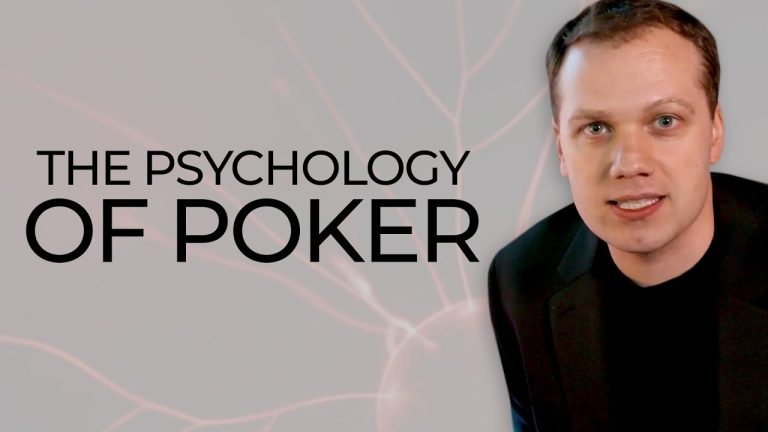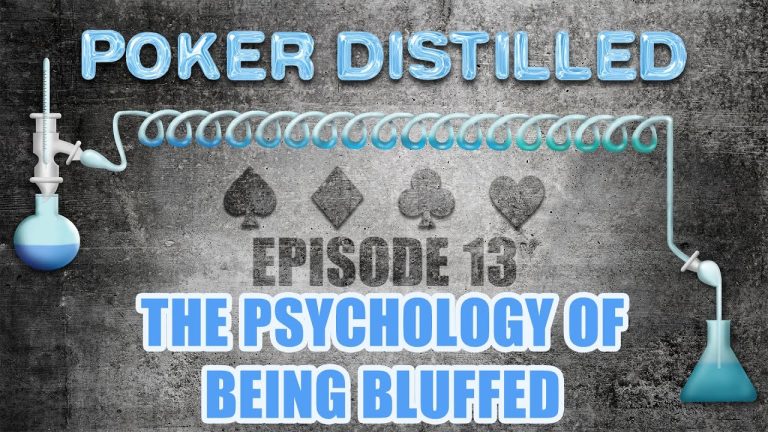In the high-stakes world of poker, where every twitch and blink can reveal valuable information, mastering the art of maintaining a poker face is essential. While a stone-cold expression may seem enough to deceive opponents, the role of body language in this game of wits should not be underestimated. From subtle gestures to shifts in posture, body language can speak volumes about a player’s hand, intentions, and level of confidence. In this article, we delve into the captivating realm of poker and explore the intriguing role that body language plays in the art of deception and strategy.
What is the level of significance of body language in poker?
Body language is a vital aspect of poker that should never be underestimated. Seasoned players are constantly on the lookout for any subtle cues or “tells” that can give away their opponents’ strategies. From a slight twitch in the eye to a nervous fidget, these non-verbal signals can reveal a lot about a player’s hand. Therefore, mastering control over your own body language and being able to decipher others’ becomes essential in the game of poker.
In addition to body language, betting style also plays a crucial role in poker. How a player places their bets can offer valuable insights into their hand strength and overall strategy. Skilled competitors can carefully observe the amount, timing, and consistency of bets to make accurate judgments about their opponents’ intentions. By combining the analysis of body language with betting patterns, astute players can gain a significant advantage and outsmart their adversaries.
It is not uncommon for even the most skilled poker players to fall victim to their opponents’ ability to read their body language and betting style. The ability to bluff effectively becomes increasingly challenging when your every move is being scrutinized. Therefore, honing one’s body language skills and maintaining a consistent betting style are crucial elements in maintaining a successful poker game. Being aware of the impact body language has on the table and making strategic adjustments can greatly enhance a player’s chances of success.
What is the reason behind the psychology of having a poker face?
The psychology behind a poker face revolves around the concept of emotional control and deception. By maintaining a blank and emotionless expression, individuals aim to conceal their true thoughts and feelings from others. This strategic approach serves to create a sense of mystery and unpredictability, making it difficult for opponents to accurately gauge their intentions and weaknesses. By mastering the art of the poker face, players can manipulate the perceptions of those around them, gaining an upper hand in the game.
A successful poker face requires a deep understanding of human psychology. It exploits the natural tendency of individuals to rely on facial expressions as a means of understanding someone’s emotions and intentions. By deliberately withholding such cues, individuals can deceive their counterparts, leading them to make incorrect assumptions and poor decisions. The poker face, therefore, becomes a powerful tool in the game of poker, allowing players to maintain a psychological advantage and increase their chances of success.
What specific traits does a poker face possess?
A poker face is defined by its ability to conceal emotions and maintain a neutral expression, revealing nothing about the cards one holds. It is an art of remaining stoic and unfazed, providing no hints or clues to opponents. With a poker face, a player becomes an enigma, leaving others to question their next move and decipher the true strength of their hand. This skill not only requires a strong emotional control but also a detached demeanor that keeps the player’s true intentions hidden, making them a formidable competitor at the poker table.
A player’s poker face is a window into their emotional control and detachment. By maintaining a blank expression, they can keep their true thoughts and feelings concealed from others, making it difficult for opponents to gauge their hand’s strength. This characteristic is key in the game of poker, where reading and deciphering opponents’ tells can greatly influence the outcome. With an impeccable poker face, a player can keep their emotions in check and maintain a sense of calmness, giving them a strategic advantage over those who wear their hearts on their sleeves.
Unmasking Poker Tells: The Art of Reading Body Language
Unmasking Poker Tells: The Art of Reading Body Language
In the thrilling game of poker, mastering the art of reading body language can be the key to deciphering your opponents’ next moves. The subtle cues and gestures that players unknowingly reveal can expose their true intentions, giving you a strategic advantage. With a keen eye for detail, you can unmask their poker tells and gain an edge on the table.
Every twitch, every furrowed brow, and every slight change in posture tells a tale. A player who nervously taps their fingers on the table may be hiding an excellent hand, while a sudden shift in body weight could indicate a bluff. By carefully observing these nonverbal cues, you can begin to unravel the hidden messages concealed within your opponents’ movements.
However, it takes more than just observation to become a master of poker tells. It requires the ability to interpret these signals accurately and swiftly. Developing this skill involves analyzing patterns, understanding human behavior, and utilizing psychological insights. By honing these skills, you can unlock the secrets behind your opponents’ poker tells and turn them into valuable information that can guide your every decision at the table.
Unmasking poker tells is an art that goes beyond the cards in your hand. It requires a deep understanding of human nature and the ability to pick up on the most subtle of cues. By mastering the art of reading body language, you will gain a powerful advantage in the game, allowing you to make informed decisions while keeping your own emotions in check. So, next time you sit at the poker table, remember to look beyond the cards and start deciphering the unspoken language of your opponents.
Mastering the Silent Language: Unlocking Poker’s Body Language Secrets
Mastering the Silent Language: Unlocking Poker’s Body Language Secrets
In the high-stakes world of poker, where every move and gesture matters, mastering the silent language of body cues can be the difference between winning and losing. With a single glance or a subtle twitch, experienced players can decipher their opponents’ true intentions, giving them a crucial edge. The art of reading body language in poker involves observing minute details such as facial expressions, hand movements, and even the way players position themselves at the table. By honing this skill, players can gain invaluable insights into their opponents’ strategies and make calculated decisions that can lead to victory. So, if you want to succeed in the thrilling game of poker, it’s time to unlock the secrets of its silent language and take your game to the next level.
In the world of poker, mastering the art of maintaining a poker face is crucial for success at the table. While many factors contribute to a player’s ability to bluff and deceive, body language stands out as a powerful tool. From subtle twitches to controlled gestures, every movement can convey valuable information to observant opponents. Understanding and harnessing the role of body language in a poker face can give players a significant edge in the game. By carefully managing their nonverbal cues, players can control the narrative of their hand, leaving their competitors guessing and ultimately increasing their chances of walking away with the coveted pot.



